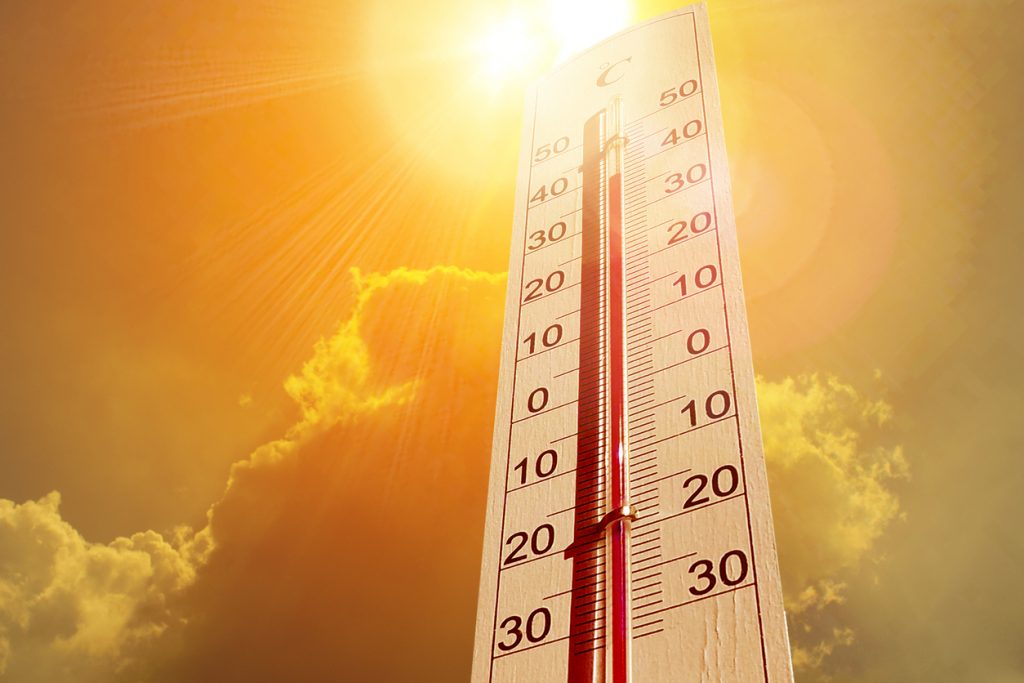Cruel Summer

Co-written by: Dr. Thomas Bernard, University of South Florida Faculty and
David Ashman, USF SafetyFlorida Safety Consultant
Although summer has officially ended and autumn is here, the hot weather has been relentless in the sunshine state, especially in the southern region. The blistering heat has broken record highs this year alone. Those working outside in construction or agriculture are especially at risk.
Workers’ exposed to extreme heat are at greater risk of heat-related disorders like heat stroke and heat exhaustion. Employers and employees must know the signs and symptoms of heat stroke and heat exhaustion, and have a plan for first aid and emergency response (please refer to the Heat Illness Guideline.) Another concern is heat fainting (called syncope), which occurs when an employee is standing for long periods of time or standing up quickly after sitting or lying down for long periods.
During a recent site visit with an employer, as we began to discuss prevention strategies related to this particular risk, the employer recalled one summer in particular in which the company faced four different instances. Two of which were recordable. He was relieved to see that as a result of training, his employees were now capable of responding in a manner that reduced the severity of injuries in all of these accounts. Employees immediately sprang into action, offering additional water sources and moving the affected to cool rooms on-site. I would venture to say that proper training and effective emergency planning helped keep those employees alive that day.
Failure to implement an effective injury and illness program can result in monetary fines from OSHA enforcement. Under General Duty Clause 5a1 OSHA can fine an employer for items discovered in an inspection that are known hazards (see OSHA and NIOSH websites). Additionally, loss of consciousness, regardless of the duration, is a recordable injury that would need to be included in your OSHA logs. Any injury or illness could result in a workers’ compensation claim that could potentially increase an employer’s modification rate and increase insurance premiums.
It is imperative to ensure that employees are properly trained on what to expect and what signs to look for. Prevention of heat stress in workers is key. Adequate training should be provided so that employees are familiar with what heat stress is, how it can impact their safety, and how it can be prevented. Providing water, rest and shade is necessary to allow employees sufficient time to cool down. More importantly, employees need to be granted the ability to stop any processes necessary to prevent a more serious injury from occurring.
According to the National Safety Council, workplace injuries and illnesses cost our economy $198.2 billion per day. Employers who invest in injury and illness prevention programs can expect to see significant cost savings in addition to reducing fatalities, injuries, and illnesses. USF SafetyFlorida, the state of Florida’s official small business consultation program provides employers with a FREE web-based tool known as the SafetyWriter. SafetyWriter allows employers to customize an injury and illness prevention program specific to their industry. To access the free tool or to request a complimentary consultation, visit www.usfsafetyflorida.com or call 1.866.273.1105.
For more information regarding heat stress:
https://www.osha.gov/heat/index.html
https://www.osha.gov/Publications/osha3154.pdf
https://www.osha.gov/SLTC/heatstress/heat_illnesses.html
https://www.weather.gov/safety/heat
https://www.osha.gov/OshDoc/data_Hurricane_Facts/heat_stress.html
